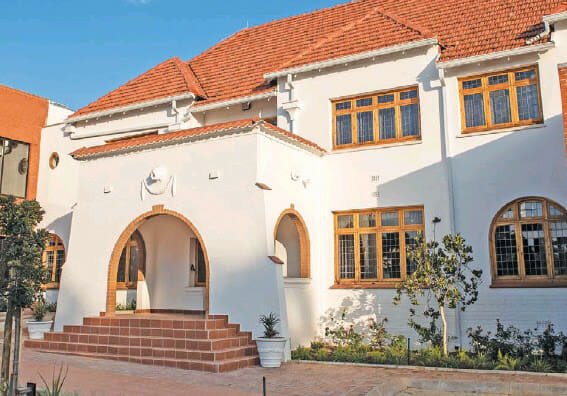Anti-apartheid legend Nelson Mandela liked hearty, simple meals, like oxtail stew. It was a favourite dish of South Africa’s first black president and now fills ravioli served in his former home, which has been transformed into a boutique hotel.
The inside of the building, hidden on a quiet street in a wealthy suburb of Johannesburg, had been defaced by squatters.
But after a floor-to-ceiling remodel, now sunlight floods in from generous skylights and bay windows. The white facade is all that remains of the original building.
Mandela lived there for eight years before moving to another home around the corner with his third wife Graca Machel. He arrived shortly after his release from prison in 1990, and promptly set about meeting the neighbours, general manager Dimitri Maritz said.
“He went knocking on every door, to introduce himself and invite neighbours for canapes and cocktails,” Maritz said.
“A Chinese man shooed him away. When he realised he had shut the door in Mandela’s face, it is said that he moved not long after that,” Maritz laughed, while noting the tale’s whiff of urban legend.
The hotel, named Sanctuary Mandela, opened in September for guests seeking to bask in the ex-president’s calm and positive energy.
The presidential suite was once actually the president’s bedroom, though the heads of guests do not rest where he did. After the remodel, the bathroom is now where his bed once stood.
The window frames bear his nickname “Madiba” and his Robben Island prison number “466/64” — scratched into the wood by his grandson.
– ‘Not a fussy person’ –
After Mandela’s release at age 71, he yearned for the simple pleasures he had been denied during 27 years in prison: playtime with his grandchildren, the scent of a rose, a sip of his favourite sweet Constantia wine.
“He was not a fussy person,” said chef Xoliswa Ndoyiya, who served Mandela’s meals for two decades.
She now heads the kitchen of the hotel’s restaurant, where every dish is inspired by his tastes.
“He did not want to see an oily plate, he didn’t have a sweet tongue. Fruit he would eat all the time, throughout the day,” she recalled.
“He was more a father than a boss. He made you feel comfortable like you were part of his family.”
Like Mandela, she’s ethnic Xhosa, giving her a shared food sensibility.
If she tried to impress Mandela’s high-profile guests with food that he didn’t fancy, “he would say ‘Why are you not feeding me well?’ I would feel guilty for trying to please the guests instead of my boss,” she said.
He liked to eat his chicken with his fingers, cleaning the meat to the bone.
“With him, you must be humble. He taught us that people will you know for who you are. I miss him, very, very much.”
– ‘Not a museum’ –
For as much as the building has been remodelled, the management wants it to feel like a home.
Images of Mandela on the walls show him playing peek-a-boo with a baby, dressed to the nines as a young lawyer, and standing with outstretched arms to read a newspaper.
Rooms bear the nicknames, Madiba and Tata, that South Africans fondly used for him.
“It is not supposed to be a museum,” Maritz said. “We wish to maintain a legacy, but it needs to be self-sustaining, it needs to stay alive.”
The goal of financial sustainability is a key difference from other sites that memorialise the struggle against apartheid.
Here, the assumption is that people are coming for the peace and tranquility that the home offers. Which doesn’t mean that they won’t talk about Mandela.
“We have so many stories,” Maritz said. “But we only tell these stories if we are asked.”
“At first you come for Madiba, the second time for the place itself,” he added, hoping that the new venture will embody Mandela’s qualities: “Humility and elegance.”





